Kandinsky: Everything Starts From a Dot

The paths started by Wassily Kandinsky echoes in the art until today. Understanding this creative genius also implies understanding the sensitivity that marks the art from the early twentieth century. This exhibition features the prologue of this enriched history that is the modern and contemporary art: the way in which it forged the passage to abstraction, the resources from which the figuration ceased to be the only possible way to represent the most vital states of the human being and, finally, the new path pioneered from this break. This leap into the void that the abstraction and the opening of a universe without boundaries to the infinite creativity of the art, can be experienced at the end of this exhibition that, points to a new way of thinking about art. And it is the artist himself, also prolific in the writing field, which opens the way through numerous theoretical texts, towards the path that he has walked in the past. It calls up all the influence of folk art and the mythical ancestor of Russia’s Northern people as part of this awakening to the expression of an intimate and lyrical sensitivity of the soul. Other contemporary artists can be gathered with Kandinsky, with productions and particular ways to reflect those issues, artists with whom he had a close relationship and nurtured this transformative dialogue about the reserved potential for art in the early twentieth century. The exhibition brings to the public a Kandinsky, with varied productions that interlace among themselves a greater work of the artist, experimental, multi-sensory, as the essence of his art. The exhibition proposes a dip into the roots of his creative universe, the first artist references, placing side by side his works with the works of his contemporaries and other parts that are gems of folk art from northern Siberia and objects of shamanic rituals. It all starts from a dot, the anthological sentence of Kandinsky, leads us beyond the graphic experiments of the artist and conveys the poetic essence pointing this complex web of references, wishes and feelings – much more than a dot – where everything in Kandinsky began. Brasília 12.11.2014 a 12.01.2015 – CCBB Brasília Rio de Janeiro 28.01.2015 a 30.03.2015 – CCBB Rio de Janeiro Belo Horizonte 15.04.2015 a 22.06.2015 – CCBB Belo Horizonte São Paulo 08.07.2015 a 28.09.2015 – CCBB São Paulo Check [aqui] what was published about it. Technical Information Curatorship Evgenia Petrova Joseph Kiblitsky General direction Rodolfo de Athayde General Coordination Ania Rodriguez Project Managment Jennifer Mclaughlin Production Assistants Karen Ituarte Daniele Oliveira Monique Santos Finance Lisiany Mayão Outers Projetcs Kandinsky: Everything Starts From a Dot Wifredo Lam: The Spirit of Creation Visions on the Ludwig Collection Gustavo Acosta – Space of Silence To the sky, To the sky, To the sky,To the ground, To the ground, To the ground Favoretto: The Colors of My Corner 130 years of Khalil Gibran Watch me Move: The Animation Show Game On Richard Wright – This Other World Mirages – Contemporary Art in the Islamic world Carlos Garaicoa The Langsdorff Expedition Islam – Art and Civilization The Art of Cuba The Russian Turning
Wifredo Lam: The Spirit of Creation

The exhibition “Wifredo Lam: the spirit of creation from 1939 to 1976” offers a retrospective look at the work of the most universal Cuban artist, since his stay in Paris between 1938 and 1940 – the city where he meets Picasso and Breton – and its decisive passage through Havana in the 1940s, the indelible mark of Haitian culture, even the most intimate works made as writer between 1950 and 1970. The exhibition emphasizes the experimental nature of the work of Lam, the progressive development through different stages, their close relationship with marginalized cultures and poetic transposition that performs these cultures in his paintings from his absolute mastery of Cubism and Surrealism. At the exhibition we can also found the presence of the myths linked to Afro-Caribbean religions performing such an important role in his painting, as well as the close relationship that his graphic work has with texts from important poets and writers linked to European surrealism or the US realism. Like the French Gherasim Luca, Dominique Agostini, José Pierre and the Colombian Gabriel García Márquez. All the works of exhibition belongs to the National Museum of Fine Arts of Cuba. Curitiba 02 de Junho a 18 de Setembro de 2015 – Museu Oscar Niemeyer São Paulo 23 de Março a 01 de Maio de 2016 – Memorial da América Latina Technical Information Curatorship Roberto Cobas Rodolfo de Athayde General direction Rodolfo de Athayde General coordination Ania Rodríguez Project management Jennifer McLaughlin Set production Karen Ituarte Executive Assistant Daniele Oliveira Finance Lisiany Mayão Outers Projetcs Kandinsky: Everything Starts From a Dot Wifredo Lam: The Spirit of Creation Visions on the Ludwig Collection Gustavo Acosta – Space of Silence To the sky, To the sky, To the sky,To the ground, To the ground, To the ground Favoretto: The Colors of My Corner 130 years of Khalil Gibran Watch me Move: The Animation Show Game On Richard Wright – This Other World Mirages – Contemporary Art in the Islamic world Carlos Garaicoa The Langsdorff Expedition Islam – Art and Civilization The Art of Cuba The Russian Turning
Visions on the Ludwig Collection
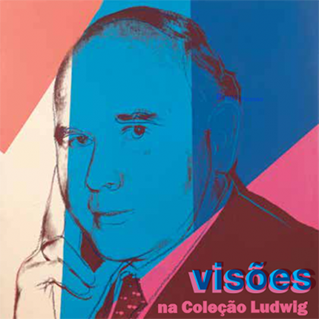
A lifetime dedicated to collecting art can be the dream of many. But when an immense collection is available to the public in various cities of the world, this dream becomes reality through the impact and transformation that causes in the lives of people who have the opportunity to come in contact with these works. This is the case of the Ludwig Collection, which over time is reaffirmed and redefined by extending their tentacles: more than a collection, several institutions; More than seats, a full foundation dedicated to research on art. The breadth of the collection is reflected in the exhibition we present here: heterogeneous with respect to pooled, the diverse origins of the creators, hybrid directions in their artistic tendencies. The public will have the opportunity to participate in this polyphony, in which multiple voices of artists from diverse backgrounds establish dialogues and build ties between them unpublished. Pop, photorealism, neo-expressionism, among many other variants of representation, form part of this show. The question of artistic expression is not the only guide of the collection, but also the diagnosis of contexts, the ability to grasp the vision of each artist in this world and rebuild their cultural surroundings. It’s a tangled web, paves the intersecting lines of an artist to another, from one geography to another. As a conductor of his own symphony, the public is also invited to speak, sharpen your ear to let flow improbable dialogues and in coping with various works, develop a vision of broader and richer world. São Paulo 25.01.2014 a 21.04.2014 – CCBB São Paulo Rio de Janeiro 13.05.2014 a 21.07.2014 – CCBB Rio de Janeiro Belo Horizonte 19.08.2014 a 20.10.2014 – CCBB Belo Horizonte Check [aqui] what was published about it. Technical Information Curatorship Evgenia Petrova Joseph Kiblitsky General Direction Rodolfo de Athayde General Coordination Ania Rodríguez Project management Jennifer McLaughlin Production Assistant Karen Ituarte Research and Assistant Curator Laura Cosendey Executive Assistant Daniele Oliveira Assistant Designer Monique Santos Finance Lisiany Mayão Finance Assistant Anderson Oliveira Outers Projetcs Kandinsky: Everything Starts From a Dot Wifredo Lam: The Spirit of Creation Visions on the Ludwig Collection Gustavo Acosta – Space of Silence To the sky, To the sky, To the sky,To the ground, To the ground, To the ground Favoretto: The Colors of My Corner 130 years of Khalil Gibran Watch me Move: The Animation Show Game On Richard Wright – This Other World Mirages – Contemporary Art in the Islamic world Carlos Garaicoa The Langsdorff Expedition Islam – Art and Civilization The Art of Cuba The Russian Turning
Gustavo Acosta – Space of Silence

The exhibition “Gustavo Acosta – Space of Silence” brings to Brazil for the first time the work of one of the greatest Cuban artists of his generation, known as ‘the young Cuban visual art of the 80s’. Guardian of the pictorial tradition, from where there is the emanation of repressed poetic emotions, Gustavo Acosta invites us to share the silence that emerges from the metaphysical scenarios and urban landscapes in stillness that he presents in his paintings and drawings, made of dashes, dots, spots, colors, memories and reflections. There are 74 works produced by the author, where the latest productions and the first steps of the artist communicate with each other through an urban landscape filled with meaning, which goes beyond the immediate appearance. A surreal atmosphere causes visitors to feel that something is out of place, but always in a very quiet way, almost as if it were possible to hear the silence in the scene. Visitors can also see part of the exhibitor’s artistic process, including the photographic research and three-dimensional modeling that he performs. The city crosses his work. In his paintings, there is the intersection of memories of Havana, where he was born, and Miami, where he went into exile, creating this space of questioning, where large cities and humans observe each other and discuss their relationship. And all this representation takes place from an aerial perspective, which the artist uses to define the analytical detachment from the work and, at the same time, to force visitors to play the role of spectators. A trip through scenarios that are both personal and universal, where the gaze of the artist, throughout the exhibition, questions us more than it answers us how it feels to be or not to be part of those dwellings, of one dwelling. Until the experience becomes synesthetic and the painting becomes tangible and we become aware of its materiality; when we need to touch, feel the pigment on our fingers, smell the acrylic and hold our breath to get intoxicated like addicts, making our own journey at last. Rio de Janeiro 18.11.2013 a 05.01.2014 – Caixa Cultural São Paulo 22.02.2014 a 20.04.2014 – Caixa Cultural São Paulo Technical Information Curatorship Rodolfo de Athayde Project Management Jennifer McLaughlin Executive Assistant Daniele Oliveira Production Assistant Karen Ituarte Finance Lisiany Mayão Outers Projetcs Kandinsky: Everything Starts From a Dot Wifredo Lam: The Spirit of Creation Visions on the Ludwig Collection Gustavo Acosta – Space of Silence To the sky, To the sky, To the sky,To the ground, To the ground, To the ground Favoretto: The Colors of My Corner 130 years of Khalil Gibran Watch me Move: The Animation Show Game On Richard Wright – This Other World Mirages – Contemporary Art in the Islamic world Carlos Garaicoa The Langsdorff Expedition Islam – Art and Civilization The Art of Cuba The Russian Turning
To the sky, To the sky, To the sky,To the ground, To the ground, To the ground
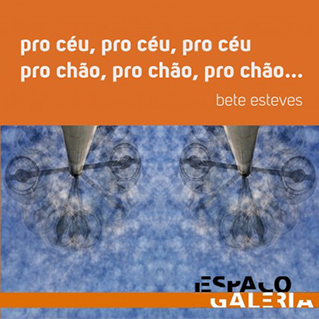
The title of Beth Esteves show, as a result from a known ditty child, suggests that often we should look up or down, we should change the usual angle through which we understand the world, change the perspective of things around us, in order to be surprised with delicacy or rapture situations; Finally, envision different ways of perception of things and meaning assignment opportunities for them. The artist warns us that: “you have to look up our heads and below our feet.” The poetic repetition, almost a mantra, invests in a playful feeling, making us look at what often would be unnoticeable to us amid our habits and daily routines. Simple objects, architectural details, small events that cross our path during our displacement through the city, they come alive and transform themselves before our eyes, urge us to find (again) this diary dream enchantment, fantasy, fiction, sharpening our ability to imagine worlds and design new ways of apprehending forms and things. In order to do it, the artist combines artistic and scientific knowledge, engineering and craft knowledge, technical knowledge and imagination. Machines, appliances, pictures, animations and designs of Beth Esteves do not work from the productive logic of the industry or cataloged needs of the body, the home, the urban area or the natural environment. The result of their actions and the product of their performance do not apply here, they do not have utilitarian nature. Before it, poetic devices are made, artistic conceptions that produce and establish sensible ways of relating with the world. Bauru 17.04.15 a 30.05.15 – Sesi Bauru Rio Claro 08.06.15 a 02.08.15 – Sesi Rio Claro Campinas 07.08.15 a 19.09.15 – Sesi Campinas São José dos Campos 25.09.15 a 01.11.15 – Sesi São José dos Campos Technical Information Curatorship Ivair Reinaldim Outers Projetcs Kandinsky: Everything Starts From a Dot Wifredo Lam: The Spirit of Creation Visions on the Ludwig Collection Gustavo Acosta – Space of Silence To the sky, To the sky, To the sky,To the ground, To the ground, To the ground Favoretto: The Colors of My Corner 130 years of Khalil Gibran Watch me Move: The Animation Show Game On Richard Wright – This Other World Mirages – Contemporary Art in the Islamic world Carlos Garaicoa The Langsdorff Expedition Islam – Art and Civilization The Art of Cuba The Russian Turning
Favoretto: The Colors of My Corner
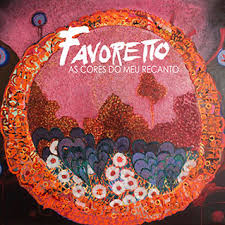
The exhibition, Favoretto, the Colors of My Corner consists on a set of works that although they are relatively recent, they are a synthesis of the artist’s work, which throughout his career keeps an unusual consistency in the treatment of his compositions and color experimentation. This is perhaps the strongest constant, what is remembered after looking to the image and you get the feeling, the color as impact and effect, reflecting the state of mind. It is sometimes placed in classic combinations – strong yellow or deep blue, as is the case of Night Forest – and sometimes unexpected – old pink and strong orange. These associations meet the specific task of subverting the represented object, subtract its original characters, which are often not easy to identify because they refer to micro-universes created by the artist, which are called unpretentiously as gardens corners. Described in some way, it means curious compositions of organic elements of outstanding points of forests where plants, flowers and stones can have any color and occupy any arrangement in the set that it meets, above all things, the requirement of finding a harmony in the composition. It is not common in Favoretto painting the presence of landscapes, concrete spaces and clear prospects, his compositions seem have a tendency to abstract methods, which isolates the representation and its significant and puts it on the foreground of the screen, hence the importance of colors and depths of the background of his canvases. This nothing concept, which works as background supports the central composition; it is a substantial part of the work and often defines it. Favoretto does not let himself be guided by concretist tradition, daughter of constructivism, which dominates a large part of the Brazilian artistic production of his generation; he decides to take another path, which is more consistent with its inland origin that behaves as a reluctantly urban person. His trace does not tend to straight lines, it is not perceived a proposed geometry, its trace is organic as the inland nature of his home, São Paulo, and it freely gets loose and curls up in order to outline the contours of the micro-worlds imagined by the artist. Campinas 08.08.2014 a 28.09.2014 – Sesi Campinas São José 03.10.2014 a 11.01.2015 – Sesi São José Itapetininga 16.01.2015 a 01.03.2015 – Sesi Itapetininga Rio Claro 06.03.2015 a 03.05.2015 – Sesi Rio Claro Botucatu 08.05.2015 a 28.06.2015 – Sesi Botucatu Technical Information Curatorship Rodolfo de Athayde
130 years of Khalil Gibran
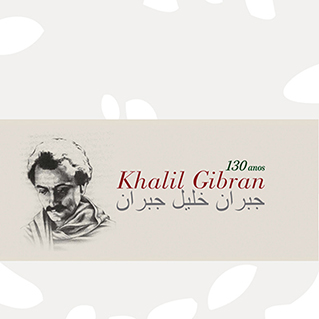
To commemorate the 130th anniversary of the birth of writer Khalil Gibran, the Brazil-Lebanon Cultural Association and Arte A occupied the Latin America Memorial in Sao Paulo with a new exhibition of the work and life of this artist. A rich portrait of this great man, a wise and artistic genius, considered to be one of the great writers of the 20th century, but whose facet of artist, painter and designer – which predates his writer side – is as grand as his literary side, but very little known to his public. The “130 years of Khalil Gibran” exhibition brings together approximately 52 original paintings, including oil paintings and wash drawings, as well as documents, manuscripts, letters and some of Gibran’s personal objects, exclusively brought from his museum, in Lebanon. In addition, the exhibition has some literary works written by Gibran, especially the classic The Prophet, which has been translated into over 80 languages and is considered to be one of the 100 most important books in the world. It is possible to see the first edition of this work, which is extremely well preserved and contains notes hand written by the author throughout the book. The literary works of Khalil Gibran are known throughout the world for their Eastern mystic character, but also for being markedly romantic and inspired by Western classics, like the Bible, poet William Blake and philosopher Nietzsche. These influences can also be found in his drawings, especially those especially created by the author to illustrate one of the editions of his own book, The Prophet. Gibran has shown to be an extraordinary artist, a portraitist that expressed himself both in works that were symbolist in character and in those that were realistic in character, which are genres that reflect and communicate perfectly with his literary verve. Full of symbolism, just like Gibran’s work, is the fact that Brazil is the first country in Latin America to receive this material and the first to commemorate the date, since we are the country that has the largest number of Lebanese immigrants. A full connection of wisdom and meaning, in tune with the feeling of the world of this great artist. São Paulo03.05 a 23.06.2013 – Memorial da América Latina Technical Information Curatorship Joseph Geagea Outers Projetcs Kandinsky: Everything Starts From a Dot Wifredo Lam: The Spirit of Creation Visions on the Ludwig Collection Gustavo Acosta – Space of Silence To the sky, To the sky, To the sky,To the ground, To the ground, To the ground Favoretto: The Colors of My Corner 130 years of Khalil Gibran Watch me Move: The Animation Show Game On Richard Wright – This Other World Mirages – Contemporary Art in the Islamic world Carlos Garaicoa The Langsdorff Expedition Islam – Art and Civilization The Art of Cuba The Russian Turning
Watch me Move: The Animation Show
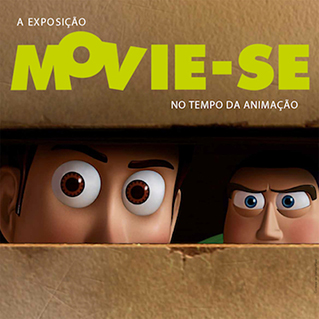
150 years of history of the motion picture. Watch Me Move: the Animation Show dynamically explores the history, culture and future of animation, showing its influence on the contemporary global culture, its languages, its striking characters and its evolution. Organized by the curatorial staff of the Barbican Centre in London, which is considered to be the largest multi-arts center in Europe, and organized here in Brazil by Arte A, the exhibition gathers contemporary artists and exponents of experimental movies, along with the ones produced by commercial studios, such as Fleischer, Walt Disney, Hanna-Barbera, Aardman, Ghibli and Pixar. This wealth of content is distributed into six thematic sections, which describe the evolution of the genre, starting with its analog origins, where the nascent technique creates a ghostly, magical and frightening expression, whose images behave like visual appearances. Then, when the technique starts to mature, ‘storytelling’ begins to prevail, giving room for the birth of fables and great characters, starting the type of narratives that we currently know, where there is immersion in the history and identification of the public with the characters. Then, pointing to the future, the exhibition highlights the experimentation with the language, the perception of color and motion, the wealth of editing as a narrative, the metalanguage of the technique and the technology. Finally, it explores the somewhat hierarchical relationship between animation and film, and its integration with other media, completing this big picture and offering a current reflection on animation as an important cultural and social-political phenomenon that is present everywhere. There are more than 100 works occupying a generous space, which includes a special room in homage to Brazilian animation, created especially for the edition of the exhibition in Brazil. A highly immersive and dynamic exhibition that balances entertainment and historical research, resulting in a rewarding and instructive experience for the wide audience to which it is intended: children and adults, laymen or experts on the subject, visitors that watch and participate in the re-creation of the imaginary history of this genre. Rio de Janeiro 05.02.2013 a 07.04.2013 – Centro Cultural Banco do Brasil do Rio de Janeiro Brasília 30.04.2013 a 07.07.2013 – Centro Cultural Banco do Brasil de Brasília Check[aqui]what was published about it. Technical Information Curatorship Greg Hilty General Direction Rodolfo de Athayde Production Coordination Ania Rodriguez Alonso Project Management Jennifer McLaughlin Production Assistants Daniele Oliveira Lucas Bevilaqua Finance Simone Tomé Others Projects Kandinsky: Everything Starts From a Dot Wifredo Lam: The Spirit of Creation Visions on the Ludwig Collection Gustavo Acosta – Space of Silence To the sky, To the sky, To the sky,To the ground, To the ground, To the ground Favoretto: The Colors of My Corner 130 years of Khalil Gibran Watch me Move: The Animation Show Game On Richard Wright – This Other World Mirages – Contemporary Art in the Islamic world Carlos Garaicoa The Langsdorff Expedition Islam – Art and Civilization The Art of Cuba The Russian Turning
Game On

Space Wars, Computer Space, Pachinko. Rock Band, Halo, GTA Grand Theft Auto. Pokemon, The Sims, Final Fantasy. If you recognize these titles, then there is no doubt that you will like this exhibition. But if you do not recognize any of them, then you need to attend this exhibition! After all, it has been at least 50 years that video games have been part of our modern society and our lives, directly and indirectly, with major impacts that range from aesthetic behavioral influence, creating a new linguistic and cultural repertoire, up to their use for pedagogical and cognitive development purposes. Conceived and developed by the Barbican Centre – the largest arts center in Europe – the Game On exhibition has already been held in more than ten countries and provides an overview of the culture of video games, from the first “arcades” up to current platforms, consoles, the mobile trend and the newest technology in virtual reality. There are more than 120 games for visitors to play, interact, learn and to reflect on the impact of games on contemporary culture, particularly on the collaborative and multidisciplinary approach that is in their essence — games cannot be created without collaboration and offer a unique opportunity for the fusion of art and science, besides inspiring children and adults to explore and interact with landscapes and concepts that previously could only be found in dreams and imagination, or guessed in other forms of art and expression. The exhibition also shows the impact of movies on games, including soundtracks composed especially for games and which are absorbed by pop music. It compares and contrasts the Asian games – especially the Japanese pioneering efforts – and American and European games, listing the best examples of each one to play and to reflect. A lesson on the history, culture and future of video games, an invitation for the family to gather and identify with this playful universe and with the possibilities to learn, to develop and to be entertained that are offered by the game world. Brasília – 26.01.2012 a 26.02.2012 – Centro Cultural Banco do Brasil Technical Information General Direction Rodolfo de Athayde Project Management Ania Rodriguez Alonso Project Management Jennifer McLaughlin Production Assistant Daniele Oliveira Others Projects Kandinsky: Everything Starts From a Dot Wifredo Lam: The Spirit of Creation Visions on the Ludwig Collection Gustavo Acosta – Space of Silence To the sky, To the sky, To the sky,To the ground, To the ground, To the ground Favoretto: The Colors of My Corner 130 years of Khalil Gibran Watch me Move: The Animation Show Game On Richard Wright – This Other World Mirages – Contemporary Art in the Islamic world Carlos Garaicoa The Langsdorff Expedition Islam – Art and Civilization The Art of Cuba The Russian Turning
Richard Wright – This Other World

Millions of black voices in a haiku. This could be a summary of the poetry of Richard Wright, but is it even possible to condense the journey of an activist, writer, poet, artist into a textual ideogram, or anywhere else? This is the proposal of the exhibition entitled “Richard Wright – This Other World,” a tribute to one of the greatest American writers of the twentieth century on the 50th anniversary of his death. Fundamental in the engaged American literature, the work of Richard Wright is a testimony both to his socio-political struggle against racism and his search for an identity that overcomes these same racial issues, of nature and roots. This leads him, in the last years of his life, to alter his view about his origins towards his transcendence, and that is what the exhibition shows: this other possible world, where the author will seek refuge in the simplicity of haiku, and he gives rise to another type of writing, represented in his posthumous book Haiku: This Other World. The visceral and broader aspect of the struggle in contrast to the subtlety and synthesis of poetry are the counterpoints that make up the structure of the exhibition, which passes through the pungent photographs of the books “12 Million Black Voices” and “Black Power” with their political semiotics to reach the interweaving of the narratives of 10 visual artists, providing a meeting between “artivists” with political and aesthetic agendas that are apparently so diverse, but whose works eventually carry the same issues as those addressed by Richard Wright, with whom they diachronically communicate. As in a big renga (collective poem of Japanese origin), the works produced by Tomie Ohtake, Yamilé Pardo, Emanoel Araujo, Roberto Diago, Rosângela Rennó, Maurício Abad, Bete Esteves, Simone Cupello, Ruslán Torres and Jorge Braulio — who is also a poet and curator of the exhibition — create links that are not always explicit in the visual and literary metaphors between the life and art of Richard Wright, but which intertwine in different poetic forms and eventually transcend the commemorative nature of the exhibition. Rio de Janeiro – 14.12.2010 a 30.01.2011 – Caixa Cultural Technical Information Curatorship Jorge Braulio Rodriguez General Direction Rodolfo de Athayde Ania Rodriguez Project Managment Jennifer McLaughlin Executive Production Ione Alves Production Assistants Daniele de Oliveira Nilda Lima da Cruz Others Projects Kandinsky: Everything Starts From a Dot Wifredo Lam: The Spirit of Creation Visions on the Ludwig Collection Gustavo Acosta – Space of Silence To the sky, To the sky, To the sky,To the ground, To the ground, To the ground Favoretto: The Colors of My Corner 130 years of Khalil Gibran Watch me Move: The Animation Show Game On Richard Wright – This Other World Mirages – Contemporary Art in the Islamic world Carlos Garaicoa The Langsdorff Expedition Islam – Art and Civilization The Art of Cuba The Russian Turning
